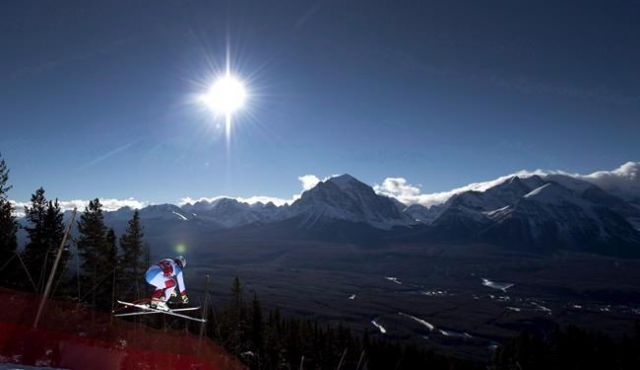After a month of frigid temperatures in the Rockies, an Environment Canada forecast for colder than typical weather in March is good news for ski resort operators hoping to extend the season with packs of spring skiers.
Meanwhile, in Ontario and Quebec, ski resorts are coping with high winds and snow this week after rain dampened activity for some over the key Christmas holiday season.
Through the first 24 days of February, mean temperatures at Banff National Park — home to Norquay, Lake Louise and Sunshine Village ski areas — averaged minus 17.9 C, about 10 degrees colder than historic norms, according to Environment Canada.
The bitterly cold weather has been seen to varying degrees across Canada and resulted in unusually big February snowstorms in Vancouver and Victoria, said David Phillips, chief climatologist for Environment Canada.
He added March is also looking like a cold month.
“Clearly what that means is that the ski season will continue, with the attractiveness that the sun will be high in the sky and there longer, but the snow you’ve got now isn’t going to disappear,” he said.
In west Calgary, the Canada Olympic Park ski hill was closed for three days in early February because of skier safety concerns due to extreme cold, but it is heading for a season-long skier count at least on par with last year.
“Last year, we had a horrible Christmas holiday season because it was so cold and we had closures,” said communications senior manager Dale Oviatt.
“This year we had the great holiday season, and then this cold snap has certainly hurt us. We have to hope we get some warmer weather over the next five weekends that we’ll be open.”
He said COP budgets for 10 closed days due to weather per year. In Calgary, where warm chinook winds from the West can turn a hill of snow into a flowing river in a few hours, the closures are often because of warm weather, not cold, he added.
Meanwhile, extreme winds forced Mount Saint Louis Moonstone, a ski area about 145 kilometres north of Toronto, to close on Monday.
The high winds from the west lasted a day and a half and raised concerns that the chairs could sway enough to hit the lift towers, general manager Robert Huter said. He said roads were also in poor condition.
At Mont Tremblant in Quebec, similar gusts forced the closure of one of its 14 lifts on Monday, said marketing director Jean-Francois Gour.
Both Huter and Gour said a busy Christmas period and good skiing weather on weekends suggest this season will be as financially successful as last year.
“This has been a really good season for us. We’ve been receiving more snow compared to the last year. We’ve had some rain, but have a great snow-making capacity,” said Gour.
Christopher Nicolson, CEO of the Canada West Ski Areas Association, said he expects this to be a “solid year” if the western hills are busy during March — his 92 member ski hills saw a record number of 9.5 million skier day visits last year.
“Most areas had snow for Christmas time, so that gave the industry a good start,” he said. “The cold weather has certainly had some impact but hopefully it will be a delay in terms of visitation, while keeping winter top-of-mind in the urban markets.”
Both its western and eastern ski resorts are having an “amazing” season, says Matt Mosteller, senior vice-president of marketing and resort experience of Resorts of the Canadian Rockies.
He said the Calgary-based company is experiencing a significant increase in longer vacations from U.S., European and Australian skiers attracted by reports of deep snow at resorts like Fernie and Kicking Horse in B.C. and Mont-Sainte-Anne near Quebec City.
“February in Western Canada has been still strong despite the cold and that was most likely due to massive snow storms during this time,” he said in an email. “The East was different and, while it experienced some rain, it mostly happened mid-week and snow would return for weekends.”

